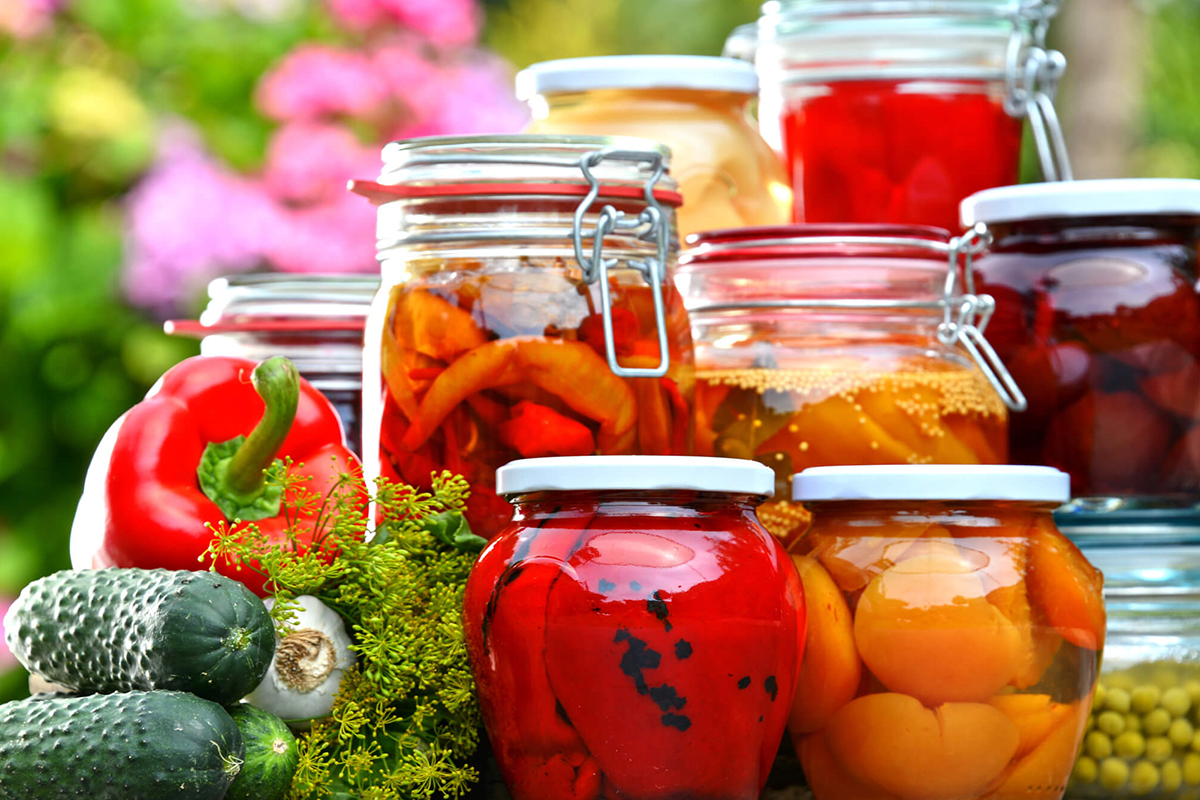Preserving fruit is an age-old practice that allows us to enjoy seasonal flavors and nutrients all year long. Whether it’s through canning, freezing, drying, or fermenting, the art of fruit preservation not only reduces food waste but also creates delicious homemade products that can be used in a variety of recipes. Here’s an overview of the most popular preservation methods and their benefits.
1. Canning
Process: Canning involves placing fruits in jars and heating them to a temperature that destroys harmful microorganisms. The heat creates a vacuum seal, preventing bacteria from spoiling the fruit.
Benefits: Canned fruits retain much of their flavor and nutritional value, and they can be stored for up to a year or longer. Canning is an excellent method for preserving fruits like peaches, apples, and tomatoes for use in jams, sauces, and pie fillings.
How to Can:
- Water Bath Canning: Ideal for high-acid fruits like berries and peaches. Fruits are submerged in boiling water for a set time.
- Pressure Canning: Used for low-acid fruits like pears or figs, this method requires a pressure canner to ensure the proper temperature for preservation.
2. Freezing
Process: Freezing is one of the easiest and most popular methods of fruit preservation. It slows down the enzymatic activity that causes spoilage, keeping fruit fresh for months.
Benefits: Freezing locks in nutrients and flavor with minimal effort. It works well for berries, mangoes, bananas, and citrus fruits. Frozen fruit can be used in smoothies, desserts, or thawed for snacks.
How to Freeze:
- Wash and dry fruit thoroughly.
- Lay the fruit on a baking sheet in a single layer to freeze.
- Once frozen, transfer to airtight containers or freezer bags to prevent freezer burn.
3. Drying (Dehydrating)
Process: Drying removes moisture from fruit, preventing the growth of bacteria, yeast, and molds. Dried fruits are lightweight, making them easy to store and transport.
Benefits: Dried fruits like apples, apricots, and raisins are nutrient-dense and can last for months without refrigeration. They make excellent snacks and can be rehydrated for use in baking or cooking.
How to Dry:
- Air Drying: Ideal for herbs and thinly sliced fruits in dry climates.
- Oven Drying: Use your oven at a low temperature to slowly dry fruits.
- Dehydrator: A dehydrator is a more efficient tool for drying fruit evenly and quickly.
4. Fermenting
Process: Fermentation is a natural process where sugars in the fruit are converted into alcohol or acids by beneficial bacteria and yeasts. This method has been used for centuries to create long-lasting preserved foods.
Benefits: Fermentation adds a tangy flavor to fruits and enhances their nutritional profile, increasing probiotic content. Fermented fruits, like pickled peaches or lemons, can be used in salads, desserts, or enjoyed as a unique snack.
How to Ferment:
- Mix fruit with salt or sugar and allow it to ferment at room temperature for several days to weeks, depending on the recipe.
- Store fermented fruits in the refrigerator to slow fermentation once they reach the desired taste.
5. Jamming and Jelly-Making
Process: Turning fruit into jam or jelly is a classic method of preservation. Jam is made by cooking down whole fruit with sugar, while jelly uses only the fruit juice.
Benefits: Jams and jellies can be stored for up to a year in sealed jars. They make delicious spreads for toast, desserts, and snacks, and are a great way to preserve fruits like strawberries, raspberries, and figs.
How to Make Jam or Jelly:
- Cook fruit with sugar and pectin to thicken.
- Pour into sterilized jars and seal them in a water bath for long-term storage.
Tips for Successful Fruit Preservation
- Choose Fresh, Ripe Fruit: The quality of the fruit you start with directly impacts the final product.
- Clean and Sanitize: Always wash fruits thoroughly and sterilize jars and containers to prevent contamination.
- Label and Date: Clearly label preserved fruit with the date of preservation to ensure you use the oldest products first.
- Store Properly: Keep preserved fruits in a cool, dark place to extend their shelf life.
Conclusion
The art of fruit preservation allows you to enjoy the taste of fresh, ripe fruit all year long while reducing waste and saving money. Whether you’re an experienced canner or new to the world of dehydrating, there’s a preservation method that suits your needs and tastes. Experiment with different techniques and discover the joy of enjoying preserved fruit in everything from breakfast spreads to gourmet desserts!
